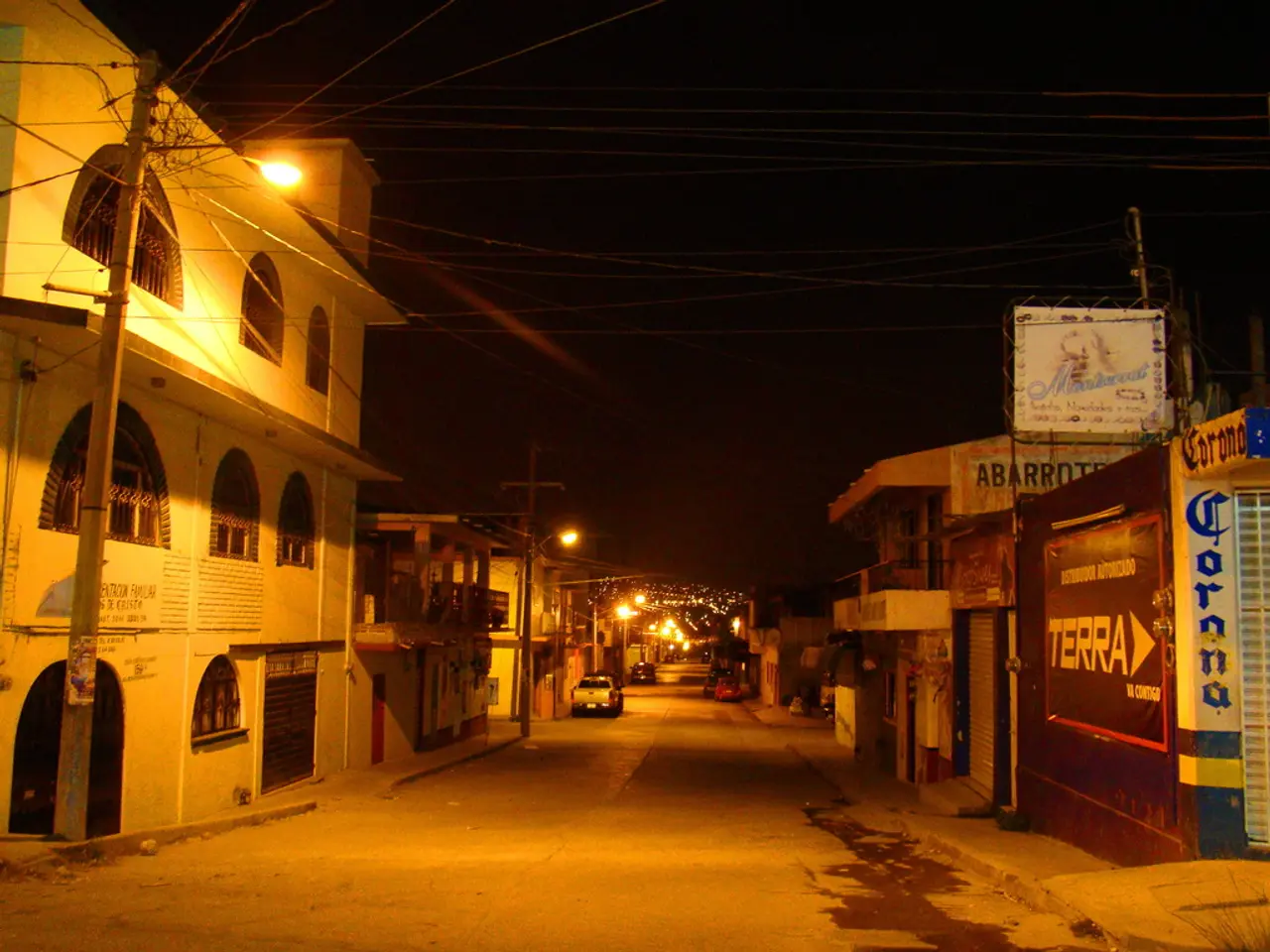British Columbia's power company, BC Hydro, expands its network of fast electric vehicle charging stations threefold within a year, aiming to provide 800 charging ports by 2026.
BC Hydro Expands Electric Vehicle Charging Network Across British Columbia
BC Hydro, a key partner in North American electric vehicle (EV) adoption, is actively expanding its EV charging network to meet the growing demand for sustainable transportation in British Columbia. Here's a roundup of key details, progress, and future plans:
Infrastructure Upgrades in Surrey and Langley
BC Hydro is investing in major projects to expand electricity capacity in fast-growing communities like Surrey and Langley. Notable projects include:
- The McLellan Substation expansion in Langley is underway in two phases. Phase 1, set to be complete by 2026, will support clean electricity supply for up to 75,000 new homes and businesses. Phase 2, scheduled for completion by 2029, will further extend this capacity.
- The Whalley Substation Feeder Addition Project in Surrey is under construction, adding four feeders to increase capacity and reliability in Whalley and Guildford. This project will power an additional 8,000-13,000 homes and is expected to be operational by summer 2026.
EV Fast Charging Network Expansion
BC Hydro is rolling out new EV fast chargers, including high-capacity 180-kilowatt models and beyond. The corporation aims to leverage connected battery fleets to help manage localized power needs, particularly in rural and outage-prone areas like the Gulf Islands, northern Vancouver Island, and eastern Kootenays.
Support Programs and Incentives
BC Hydro, in collaboration with partners such as FortisBC and the Fraser Basin Council, offers rebates and advisory services for EV charger installations, especially for multi-unit residential buildings, workplaces, and fleets. Programs like CleanBC Go Electric provide financial incentives and guidance to accelerate EV infrastructure adoption.
BC Hydro also administers an EV Fleet Program supporting electrical infrastructure installation for medium- and heavy-duty zero-emission vehicle fleets with funding conditions that include an approved EV Ready Fleet Plan.
Future Outlook
BC Hydro continues to engage in a $36 billion capital plan targeting long-term growth in electricity infrastructure to ensure energy remains affordable and sustainable for expanding communities. Their new calls for power seek to secure more affordable, clean, and renewable electricity, underpinning the future charging network expansion and broader clean energy economy.
Further Expansion and Faster Charging
Faster charging options, such as 400 kW chargers, are expected to roll out later this year, delivering 100 kilometers of range in only three minutes on compatible EVs. BC Hydro aims to expand its network to 800 charging ports by spring 2026.
Approximately 85 percent of the charging ports are fast chargers supporting CCS, NACS, and CHAdeMO connectors. The network's power output has quadrupled from 10 megawatts to 41 megawatts.
The BC Hydro EV Charging Progress Report is available for download, detailing the expansion of its public fast-charging network for electric vehicles in British Columbia over the past year. Over this period, BC Hydro added 418 new charging ports to its network, tripling the size of its public fast-charging network.
The electric vehicle population in British Columbia currently stands at approximately 195,000 vehicles, with expectations of growth to between 700,000 and 900,000 by the mid-2030s.
[1] BC Hydro, "BC Hydro's Capital Plan," https://www.bchydro.com/about-us/capital-plan.html
[2] CleanBC, "Everything Electric Vancouver," https://cleanbc.gov.bc.ca/events/everything-electric-vancouver/
[3] BC Hydro, "Our Power," https://www.bchydro.com/about-us/our-power.html
[4] CleanBC Go Electric, https://www2.gov.bc.ca/gov/content/transportation/electric-vehicles/incentives/residential
[5] BC Hydro, "EV Fleet Program," https://www.bchydro.com/content/dam/bchydro/docs/about-us/programs/electric-vehicles/ev-fleet-program.pdf
- The growth in electric vehicle (EV) adoption in British Columbia is propelling BC Hydro to expand its EV charging network, which aligns with the global transition towards sustainable science and environmental-science.
- Investments in infrastructure upgrades, such as the McLellan Substation expansion in Langley and the Whalley Substation Feeder Addition Project in Surrey, will support the increasing electricity demands generated by the climate-change mitigating industry.
- BC Hydro's vision for the future includes leveraging technology solutions like data-and-cloud-computing and connected battery fleets to manage localized power needs in outage-prone areas, benefiting both the environment and lifestyle.
- The finance sector plays a significant role in this transition as programs like CleanBC Go Electric offer financial incentives to accelerate EV infrastructure adoption, such as EV charger installations in workplaces and multi-unit residential buildings.
- The transportation sector is experiencing a transformation, with BC Hydro planning to deploy 400 kW fast chargers later this year, delivering rapid charging capabilities for electric vehicles.
- The proliferation of electric vehicles in British Columbia is predicted to reach between 700,000 and 900,000 by the mid-2030s, which underscores the importance of the expanding EV charging network in minimizing the industry's carbon footprint and ensuring a sustainable future.




